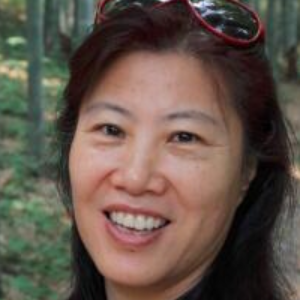Title : Hormone Signaling and Alternative splicing in Moso Bamboo Shoot Growth
Abstract:
Moso bamboo is a large, woody bamboo with the highest ecological, economic and culturalvalue of all the bamboo types and accounts for up to 70% of the total area of bamboo grown. However, the spatiotemporal variation role of moso bamboo shoot during growth period is still unclear. We found that the bamboo shoot growth can be divided into three distinct periods, including winter growth, early growth and late growth based on gene expression and anatomy.
In the early growth period, lateral buds germinated from the top of the bamboo joint in the shoot tip. Intercalary meristems grew vigorously during the winter growth period and early growth period, but in the late growth period, mitosis in the intercalary meristems decreased. The expression of cell cycle-associated genes and the quantity of differentially expressed genes were higher in early growth than those in late growth, appearing to be in?uenced by hormonal concentrations. Gene expression analysis indicates that hormone signalling genes play key roles in shoot growth, while auxin signalling genes play a central role. In situ hybridization analyses illustrate how auxin signalling genes regulate apical dominance, meristem maintenance and lateral bud development. Our study provides a vivid picture of the dynamic changes in anatomy and gene expression during shoot growth in moso bamboo, and how hormone signalling-associated genes participate in moso bamboo shoot growth.
Alternative splicing (AS) is a key regulatory mechanism associated with proteome and transcriptome diversity. However, the prevalence of AS in the moso bamboo genome is still unclear. Transcriptome sequencing of four different tissues indicated that 36.17% of the genes in the moso bamboo genome undergo AS. The predominant type of AS found in moso bamboo was intron retention (38.70%), followed by alternative 5′ (31.86%) and 3′ (16.68%) splice sites and exon skipping (11.46%). The number of AS events in every gene was relevant to gene characteristics and gene expression. We also observed that the alternative 5′ and 3′ splice sites were significantly enriched in the fourth nucleotide downstream or upstream of the dominant splice sites. Furthermore, the frequency of AS types as well as the quantity of AS events significantly varied among different tissues. The findings of the present study
Take Away Notes:
• By the transcriptome analysis to explore the main regulation factors on bamboo shoot fast growth.
• Be helpful to learn alternative splicing in genomic level for the audience in their job.
• This presentation will provide a practical solution to a problem that could simplify farm’s job more efficient. It will provide new information to insight in a bamboo growth and development.


